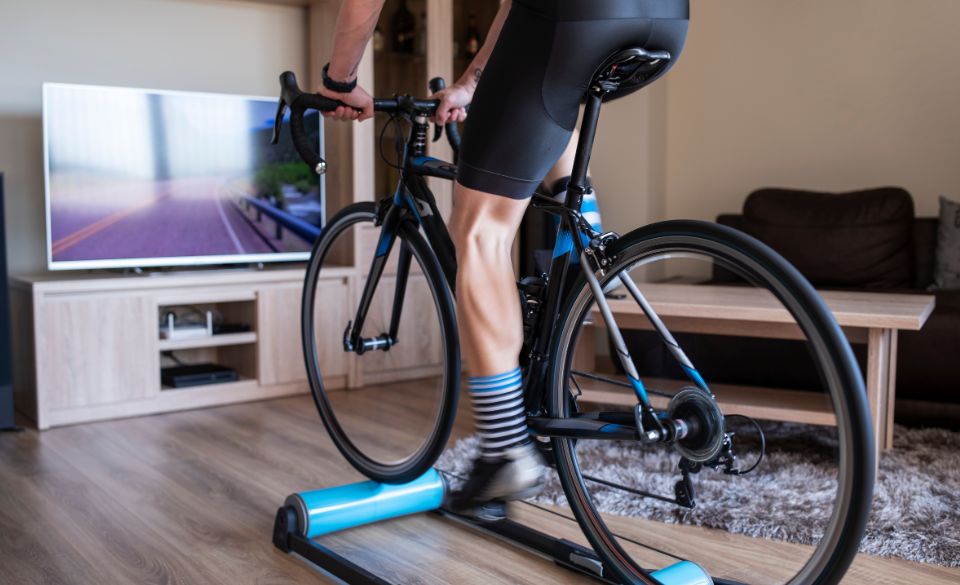
Cycling After Acl Surgery: A Complete Guide
Page Contents
If you’re on the journey of recovery after ACL surgery, you might be wondering about the possibility of getting back on the saddle and cycling once again. After all, cycling offers a low-impact cardiovascular workout that can be gentle on your healing knee. In this comprehensive guide, we’ll delve into the world of cycling after ACL surgery and provide you with valuable insights to help you navigate this exciting phase of your recovery.
Is Cycling Good After ACL Surgery?
If you’re on the mend from an ACL surgery, you might be wondering whether cycling is a suitable exercise option for your rehabilitation journey. Well, buckle up, because we’re about to pedal through the details and shed light on the fantastic world of cycling after ACL surgery.
The Low-Impact Love Affair: Let’s get straight to the point – yes, cycling can be a remarkable choice after ACL surgery. Picture this: you’re on a bike, wind in your hair, scenery whizzing by, and your healing knee cooperating beautifully. Cycling is a low-impact activity, which means it’s easy on the joints. This low-impact nature is like a gentle hug for your knee, especially in the initial stages of recovery.
Strength, Stamina, and Smiles: Don’t let the “low-impact” fool you into thinking cycling is a walk in the park. When you pedal those wheels, you’re engaging your leg muscles, working on your cardiovascular fitness, and giving your mood a boost – all without putting excessive strain on your recovering ACL. A study published in the Journal of Orthopaedic & Sports Physical Therapy even chimed in, highlighting how cycling can contribute to improved knee strength and overall functional outcomes after ACL surgery.
Mobility Magic: Your knee is like a delicate dance partner right now, and cycling introduces it to a graceful range of motion. The repetitive motion of cycling encourages gentle flexion and extension, which can contribute to the gradual restoration of your knee’s movement. It’s like giving your knee a chance to stretch its legs in a controlled environment.
The Right Way to Roll: While cycling is a fantastic choice, it’s not a free pass to jump onto a mountain bike and conquer rough terrains. Stationary cycling or cycling on flat, smooth surfaces is your go-to during the early stages of recovery. Think of it as a spa day for your knee – soothing, relaxing, and oh-so-comfortable.
In a nutshell, cycling after ACL surgery can be your secret weapon in the battle for recovery. It’s a way to stay active, improve your knee’s mobility, and keep your spirits high – all while minimizing the risk of overloading your healing joint. However, remember that every recovery journey is unique. Consult with your medical team, start slow, and listen to your knee’s cues.
Studies Supporting Cycling After ACL Surgery
Study #1: The Journal of Orthopaedic & Sports Physical Therapy
This study took a deep dive into the impact of cycling on post-ACL surgery recovery. The results? They’re nothing short of impressive. The research highlighted that cycling can play a pivotal role in enhancing knee strength and functional outcomes after ACL surgery. The low-impact nature of cycling allows you to engage your knee without subjecting it to excessive stress. So, when you’re pedaling away, you’re not just enjoying the scenery – you’re giving your knee a gentle workout that contributes to its rehabilitation.
Study #2: The American Journal of Sports Medicine
If you’re wondering about the safety and efficacy of cycling after ACL surgery, this study has your back. It focused on examining the impact of cycling on knee stability and function. The findings emphasized that cycling can indeed be a safe and effective component of post-ACL surgery rehabilitation. By incorporating cycling into your recovery plan, you’re not only building your knee’s strength and stability but also enhancing your overall functional capacity.
Study #3: Journal of Applied Biomechanics
This study decided to take a closer look at the mechanics of cycling after ACL surgery. The research found that cycling allows for controlled knee movement within a pain-free range of motion. This controlled movement is like a gentle massage for your knee, promoting flexibility and mobility while minimizing the risk of aggravating your healing ACL. It’s like giving your knee a healing spa treatment every time you hop on that bike.
How Soon Can I Cycle After ACL Surgery?
If you’re itching to hop back onto the saddle after ACL surgery, the burning question might be: “When can I start cycling again?” Fear not, for we’re here to provide you with insights to help you navigate this pivotal phase of your journey.
The Early Stages: Picture this: your surgery is a success, and your knee is on the mend. In the initial weeks post-surgery, your focus is primarily on healing and ensuring that your surgical site is properly closed and recovered. Your medical team will guide you through this phase, and while cycling might not be on the agenda just yet, you’re laying the foundation for a strong return to the pedals.
The Green Light: Around 4 to 6 weeks post-surgery, you might receive the green light from your orthopedic surgeon or physical therapist to engage in stationary cycling. This is your cue to dust off that stationary bike and embark on a gentle, controlled journey to recovery. Keep in mind that this timeline can vary based on individual factors, so it’s essential to follow your medical team’s recommendations.
Baby Steps: As you embark on your cycling adventure, remember that you’re taking baby steps. Begin with short, comfortable sessions on a stationary bike with minimal resistance. Focus on the smoothness of the motion and the absence of discomfort in your healing knee. Think of it as a delightful reunion with your bike, where you’re nurturing your knee’s mobility and reacquainting it with the joy of movement.
Building Intensity: As your knee gains strength, stability, and your medical team gives you the nod, you can gradually increase the resistance on the stationary bike. This step-by-step approach allows your knee to adapt, without overwhelming it with excessive strain. Your body has an incredible capacity to heal, and by pacing yourself, you’re paving the way for a successful return to cycling.
Listen to Your Body: Here’s a universal truth: your body is your guide. It has a knack for communicating its needs, and this phase of recovery is no different. If you experience pain, discomfort, or unusual sensations while cycling, it’s time to pump the brakes and consult your medical team. Your well-being is paramount, and by respecting your body’s signals, you’re ensuring a smoother and safer journey.
In essence, cycling after ACL surgery is a beautiful blend of patience and progression. Your journey is unique, and the timing of your return to cycling will depend on factors like the type of surgery and your rate of recovery.
Final Thoughts: Cycling After ACL Surgery
Cycling after ACL surgery can be a fantastic way to regain strength, mobility, and confidence in your knee. However, it’s crucial to approach your return to cycling with caution, patience, and a focus on proper form. Consult with your orthopedic surgeon and physical therapist before resuming cycling or any other exercise, and follow their recommendations closely.
Remember, your recovery journey is a marathon, not a sprint. Celebrate every milestone, no matter how small, and give your body the time it needs to heal and rebuild. Whether you’re cycling along scenic routes or pedaling in the comfort of your home, enjoy the process of getting back on your bike and embracing the joy of movement once again. Your knee might have had a setback, but your determination and commitment will propel you forward on the path to a stronger, healthier you.



